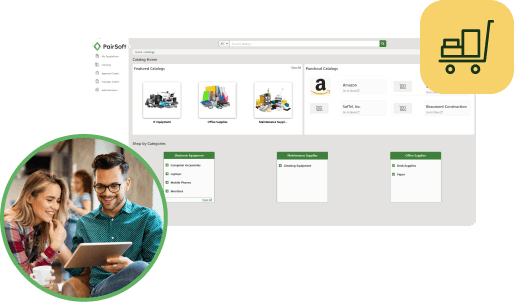Moving Enterprise Procurement Toward Lean
Every enterprise can benefit from adopting lean principles—as the lean mindset focuses on adding value and reducing both waste and cost. While much is written about the compounding benefits of lean manufacturing, lean procurement is given less attention, even though many of the same principles can be applied to reduce waste and lower overall purchasing costs. Here we consider five ways to move to a leaner, greener procurement operation.
1. Centralize procurement functions
One of the main reasons why companies have trouble managing their purchasing practices optimally is because different employees procure in different ways and from different locations, and these processes are not coordinated or tracked. This often leads to maverick spending, overstocking and missed opportunities for lower, volume pricing. Centralizing the procurement functions can address these challenges.
Deloitte’s Global Chief Procurement Officer Survey found that consolidating spend is the lever CPO’s expect to deliver the most value in the coming year. By centralizing the organization’s spending, enterprisesgain visibility into corporate spending—including what they are buying, when and from whom—and that visibility provides better control, less waste and more negotiating power.
2. Stronger supplier management
Often there is little coordination within the procurement process of supplier management. Managing internal catalogues or accessing external catalogues from suppliers that offer incentives is an often overlooked a means to secure better products, at a better price and improved delivery times. The lack of supplier management can lead to higher prices, overlooked discounts and terms, unnecessary inventory and a greater risk of shortages of the things you really need. In a global economy, centralized management of approved and negotiated suppliers can lead to substantial savings and improved inventory and financial.
The 2018 Deloitte Global CPO Survey found that supplier relations are an underutilized avenue for delivering value. Considering that for many industries, the percentage of product value outsourced to suppliers exceeds 40%, your organization’s relationships with its suppliers can tip the scales of profitability. The benefits of strong supplier relationships include reduced costs, faster decision-making capacity, ongoing process improvements and faster innovation. We offer tips for improving supplier collaboration in this article.
3. Automate routine processes across the enterprise
Decreasing the cycle times associated with procuring products and services is an effective way to cut procurement costs. Research from the American Productivity & Quality Center’s (APQC) found that top performers in procurement take fewer hours to place a purchase order and wait fewer days to receive materials from suppliers.
Automating and standardizing the procurement process with suppliers can significantly reduce the time it takes to receive the ordered product. According to APQC’s research, an ecommerce/procurement solution can cut an organization’s cycle time from seven days to two. Not only does this mean you reduce lead time, it can also help increase procure-to-pay efficiency. Consider the following to gain further advantages:
4. Consider the user experience
User adoption is at the core of the ROI in any software solution. Many organizations live with manual and archaic processes that are not effective or efficient. Some organizations use systems that were never intended for procurement purposes but are simply the only way to procure an item or service.
A procurement or spend management system that is intuitive and easy to use promotes full user adoption. Procurement processes that are overly complex lead to increased unmanaged spend (also known as maverick spending) as users look for ways to bypass the burdensome workflow. By incorporating a procurement solution that provides the necessary functionality, along with full visibility and easy-of-use, your solution will get used and begin adding value and lowering costs from the start.
Every dollar your company saves in procurement goes directly to bottom line. A smart approach to sourcing, inventory holdings, vendor relations and technology tools can help create savings and efficiencies at every touchpoint, providing the enterprise with a significant competitive advantage.






